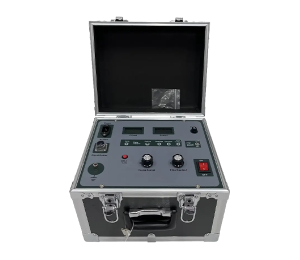 English
English


loop impedance tester
Understanding Loop Impedance Testers A Key Tool for Electrical Safety
In the realm of electrical installations and safety compliance, loop impedance testers play a vital role. These devices are essential for assessing the safety and effectiveness of electrical systems, ensuring that they provide reliable protection against electric shocks and faults. This article delves into the significance of loop impedance testers, their functioning, and their applications.
A loop impedance tester evaluates the impedance of the earth fault loop, which is the path that electricity would take in the event of a fault in the system. This test measures how effectively the electrical circuit can carry fault current back to the source, typically the transformer or generator. A low impedance value indicates that the circuit can effectively clear faults by blowing fuses or tripping breakers, thereby preventing dangerous situations.
The principle behind loop impedance testing is relatively simple. The tester applies a small current into the loop and measures the voltage drop across it. Using Ohm's Law (V = I × R), the tester calculates the impedance, represented in ohms. This information is critical for ensuring that protective devices, such as circuit breakers and fuses, will operate correctly in the event of a fault.
In practical terms, loop impedance testers can measure both the line-to-earth impedance (the impedance from the phase conductor to the ground) and the line-to-line impedance (the impedance between phase conductors)
. This dual capability allows electricians to gain comprehensive insights into the safety of electrical installations.loop impedance tester

One of the significant advantages of using loop impedance testers is their ability to identify potential issues before they lead to catastrophic failures. For instance, high loop impedance may indicate inadequate bonding or grounding of electrical installations, which can pose significant safety risks. By regularly testing loop impedance, electricians can ensure that systems are compliant with relevant safety standards, such as the National Electrical Code (NEC) in the United States or the International Electrotechnical Commission (IEC) standards worldwide.
In addition to safety compliance, loop impedance testing can also enhance the efficiency of electrical systems. When impedance levels are within acceptable ranges, it ensures that electrical devices operate optimally, reducing energy waste and prolonging equipment life.
Moreover, modern loop impedance testers come equipped with advanced features like automatic calculations, data storage, and Bluetooth connectivity, making it easier for professionals to record their findings and generate comprehensive reports. These features simplify the testing process and enhance productivity, fundamentally changing the way electrical engineers conduct safety assessments.
In conclusion, loop impedance testers are indispensable tools in the electrical industry, playing a crucial role in ensuring safety and efficiency in electrical installations. By providing critical data on the earth fault loop impedance, these testers help prevent potential hazards and ensure compliance with safety standards. As technology continues to advance, loop impedance testers will remain essential for the ongoing protection of both electrical systems and those who rely on them.
-
Differences between open cup flash point tester and closed cup flash point testerNewsOct.31,2024
-
The Reliable Load Tap ChangerNewsOct.23,2024
-
The Essential Guide to Hipot TestersNewsOct.23,2024
-
The Digital Insulation TesterNewsOct.23,2024
-
The Best Earth Loop Impedance Tester for SaleNewsOct.23,2024
-
Tan Delta Tester--The Essential Tool for Electrical Insulation TestingNewsOct.23,2024





